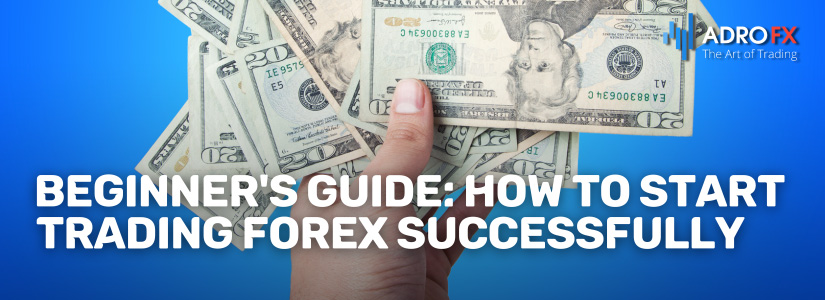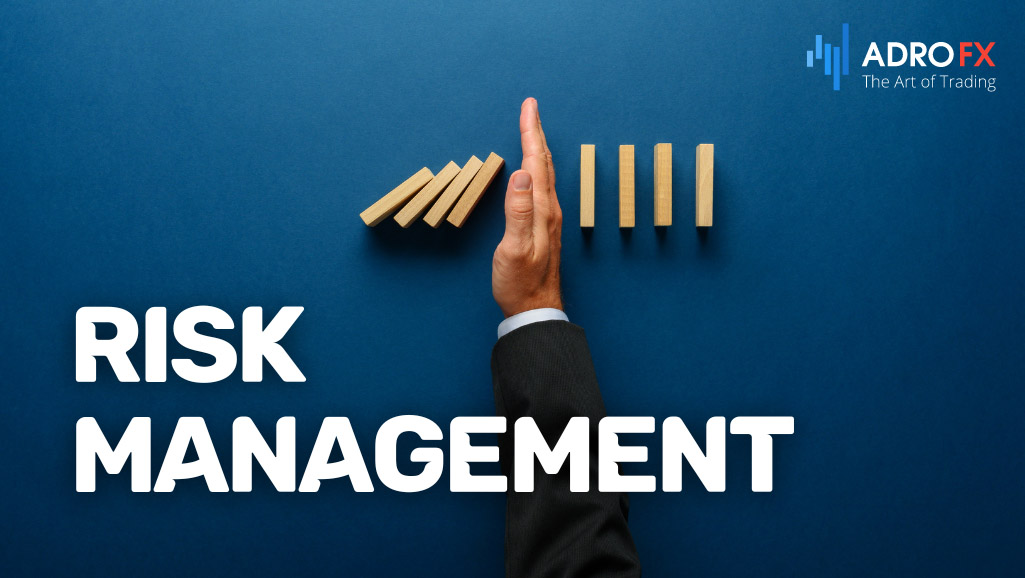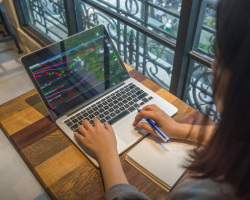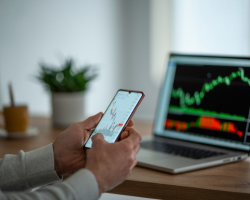Beginner's Guide: How to Start Trading Forex Successfully

Welcome to the exciting world of forex trading, where currencies from every corner of the globe are exchanged in a vast, interconnected marketplace. Unlike traditional financial markets, the forex arena is open around the clock from Monday to Friday, making it a dynamic and highly liquid environment. With daily transactions reaching into the trillions, the forex market stands as the most extensive and active financial market on the planet.
Trading in forex means stepping into a bustling global network that fuels international trade and investment. For instance, companies across the world rely on forex trading to convert currencies, facilitating everything from cross-border business deals to investments. This market doesn’t just affect multinational corporations; it also impacts everything from inflation rates to economic stability on a global scale.
By diving into forex trading, you engage in a marketplace that is as influential as it is diverse. It’s a realm where currency values constantly fluctuate, creating a myriad of opportunities for savvy traders. Understanding and mastering this intricate market opens doors to not just personal financial growth but also a deeper connection with the global economy.
Why Trade Forex?
The appeal of forex trading is irresistible for many reasons, each offering a unique advantage in the financial world. One of the most compelling features is the market's 24-hour availability, providing unparalleled flexibility. Whether you’re a full-time trader or simply looking to fit trading around your existing schedule, the forex market accommodates your needs, allowing you to trade whenever it suits you best.
Another major benefit of forex trading is its exceptional liquidity. This means you can buy and sell currencies quickly and at your desired price, often benefiting from tighter spreads that lower your trading costs. The high liquidity also ensures that your trades are executed efficiently, minimizing delays and maximizing your potential for profit.
Additionally, the forex market offers substantial leverage, enabling you to control larger positions with relatively small amounts of capital. This leverage can amplify your returns, but it’s essential to approach it with caution, as it also increases the potential for losses. Responsible trading practices are crucial to manage this risk effectively.
Forex trading also boasts low barriers to entry compared to other financial markets. Unlike stock markets, which may demand significant capital to start, forex trading is accessible to traders with a range of budgets. For beginners, using a forex demo account provides a risk-free opportunity to practice and build confidence. This practice environment allows you to hone your trading skills without financial risk, setting the stage for a more informed transition to live trading.

Understanding the Basics
Starting your journey in forex trading requires a solid grasp of fundamental concepts and key terminology. This section will provide you with the essential knowledge needed to navigate the forex market confidently.
Key Forex Terminology
Before diving into the world of forex trading, it’s crucial to get comfortable with some fundamental terms that will help you make informed decisions and navigate the market with confidence. Here’s a guide to key forex terminology:
- Pips
In forex trading, a pip represents the smallest incremental change in the value of a currency pair. For most pairs, this is equal to 0.0001 of the quoted price. Pips are used to measure the movement in the exchange rate and are essential for calculating profits and losses.
- Lots
Forex trading involves dealing in lots, which are standardized quantities of a currency. The standard lot size is 100,000 units of the base currency. There are also mini lots (10,000 units) and micro lots (1,000 units), which offer more flexibility for traders with different capital sizes.
- Leverage
Leverage allows you to control a larger position size with a smaller amount of capital. For example, with a 100:1 leverage ratio, you can control $100,000 worth of currency with just $1,000 of your own money. While leverage can magnify potential gains, it also increases the risk of significant losses, so it should be used judiciously.
- Margin
Margin is the amount of money required to open and maintain a leveraged trading position. It acts as a security deposit that your broker holds to cover potential losses. The size of the margin depends on the leverage ratio and the size of your trading position.
Forex trading involves buying one currency while simultaneously selling another, and these are quoted in pairs. The first currency in the pair is known as the base currency, and the second is the quote currency. For instance, in the EUR/USD pair, the Euro (EUR) is the base currency, and the US Dollar (USD) is the quote currency. Understanding how these pairs are quoted helps you interpret price movements and execute trades effectively.
How the Forex Market Functions
The forex market is a vast and intricate system where global currencies are traded around the clock. Unlike traditional stock exchanges like the NYSE or NASDAQ, which operate within specific physical locations, the forex market is decentralized. It functions through a complex network of banks, brokers, and financial institutions that span across major financial hubs around the world. This decentralized structure ensures that the forex market remains active 24 hours a day, five days a week, accommodating different time zones and global trading hours.
Market participants in forex trading are diverse, each contributing to the dynamic nature of currency exchange. Retail traders, such as individual investors, engage in trading through brokers, often using personal strategies to profit from currency fluctuations. Meanwhile, larger institutions, including banks and corporations, trade substantial volumes of currency to manage risks or capitalize on market opportunities. Governments also participate in forex trading to influence their national currencies and stabilize their economies.
Forex trading sessions are segmented into four primary trading centers: Sydney, Tokyo, London, and New York. Each session brings unique characteristics to the market. For example, the overlap between the London and New York sessions is known for heightened trading activity and increased volatility, creating abundant trading opportunities. Understanding these sessions and their impact on market behavior is crucial for timing your trades effectively.
By grasping the fundamentals of how the forex market operates and familiarizing yourself with key terms, you establish a solid foundation for trading. To further enhance your understanding and build confidence, practicing with a forex demo account is highly recommended. This allows you to experiment with strategies and gain hands-on experience in a risk-free environment before transitioning to live trading.
Ready to start practicing? Open a demo account with AdroFX today and begin your journey towards becoming a successful forex trader. Register for a demo account here.

Getting Started
Starting your journey in forex trading involves several crucial steps. From selecting a reliable broker to setting up your trading account and practicing with a demo account, each stage is vital to your success. This section will guide you through these initial steps to ensure a smooth start to your trading experience.
Choosing a Forex Broker
Selecting the right forex broker is a critical first step when you start trading forex. Your broker will facilitate your trades and provide the platform and tools you need to succeed. Making an informed choice can greatly impact your trading performance and overall experience.
Factors to Consider:
- Regulation
Ensure the broker is regulated by a reputable financial authority. Regulation provides a level of security and oversight, protecting your investments.
- Fees
Evaluate the spreads, commissions, and other fees associated with the broker. Lower costs can improve your profitability.
- Platform
The trading platform should be user-friendly, reliable, and equipped with the necessary tools and features for effective trading.
- Customer Support
Good customer service is essential, especially for beginners. Ensure the broker offers responsive and helpful support.
Research and Comparison of Brokers:
- Online Reviews
Read reviews from other traders to gauge the broker's reputation and reliability.
- Demo Accounts
Test multiple brokers using demo accounts to experience their platforms firsthand.
- Broker Comparison Websites
Utilize resources that compare brokers based on fees, features, and user feedback.
Setting Up a Trading Account
Once you've chosen a broker, the next step is to set up your trading account. This process involves several important steps to ensure your account is ready for live trading.
Steps to Open a Live Trading Account:
- Choose Your Account Type
Brokers often offer different types of accounts based on your trading needs and experience level.
- Complete the Registration Form
Provide your personal details, including your name, address, and contact information.
- Verify Your Identity
Submit required identification documents, such as a passport or driver's license, to verify your identity and comply with regulatory requirements.
- Fund Your Account
Deposit the required initial funds into your trading account. Brokers may have varying minimum deposit requirements.
- Download the Trading Platform
Install the broker's trading platform on your device and log in using your account credentials.
Exploring Forex with a Demo Account
Before stepping into the world of live forex trading, it's crucial to get some hands-on experience with a forex demo account. This tool offers a risk-free way to build your skills and boost your confidence without putting real money on the line.
A forex demo account functions as a simulated trading environment, complete with virtual funds. It mirrors real market conditions, allowing you to test various trading strategies and become acquainted with the trading platform’s features. This virtual playground provides a safe space to hone your skills, experiment with different approaches, and get comfortable with the trading tools at your disposal.
Using a demo account comes with a host of benefits. You can explore trading strategies and learn from your errors without financial stress, giving you the freedom to experiment and refine your techniques. It also helps you familiarize yourself with the broker's platform, ensuring you're well-prepared for live trading. Additionally, a demo account allows you to evaluate different strategies and see how they perform under various market scenarios, which is invaluable for developing a well-rounded trading approach.
Getting started with a forex demo account is straightforward. Begin by visiting your broker's website and finding the demo account section. You'll be required to enter some basic details, such as your name and email address, to register. After registration, you might need to download the broker's trading software if necessary. Once the platform is set up, log in with the credentials provided and start navigating the simulated trading environment. This is your chance to practice placing trades, using the platform’s tools, and testing out your strategies.
Engaging with a demo account is a vital step in your trading journey. It prepares you with the knowledge and confidence needed for a smooth transition to live trading. When you’re ready to take the plunge into the real market, you’ll do so with greater ease and a clearer understanding of how to succeed.
Ready to start practicing? Open a demo account with AdroFX today and begin your journey towards becoming a successful forex trader. Register for a demo account here.
Developing a Trading Plan
Creating a solid trading plan is a crucial step when you start trading forex. A well-defined plan helps you maintain discipline and consistency, crucial elements for success in the volatile forex market. Your trading plan should outline your trading goals, risk tolerance, and strategies. Begin by setting clear, realistic goals for what you aim to achieve, whether it's a specific monthly profit target or a long-term growth objective. This clarity will guide your trading decisions and keep you focused.
Your plan should also detail the strategies you will employ. Consider your trading style and time commitment. Will you be a scalper, taking advantage of small price movements? Or perhaps a swing trader, holding positions for several days? Each strategy requires a different approach and mindset. Finally, include risk management rules to protect your capital, such as setting maximum loss limits and defining how much of your account you are willing to risk on each trade.
Crafting Your Forex Trading Strategy
Designing a forex trading strategy that aligns with your individual goals and trading style is crucial for achieving success in the forex market. The right strategy not only enhances your trading performance but also helps in managing risk and making informed decisions. Here’s a look at some popular strategies and how to choose the right one for you.
Scalping is a strategy focused on making numerous small trades throughout the day to capitalize on tiny price movements. This approach requires rapid decision-making and constant vigilance, as traders aim to profit from brief fluctuations in the market. Scalping is ideal for those who thrive on quick trades and real-time analysis.
Day trading involves buying and selling financial instruments within the same trading day. Day traders benefit from daily price movements while avoiding the risk of holding positions overnight. This strategy suits individuals who prefer a more active trading style and can dedicate substantial time to monitoring the markets throughout the day.
Swing trading, in contrast, involves holding trades for several days or weeks to capitalize on larger price swings. This method is less intensive than scalping or day trading and allows traders to take advantage of medium-term market trends. Swing trading is well-suited for those who prefer a more measured approach and can analyze the market over a longer time frame.
When developing your strategy, you’ll need to choose between technical analysis, fundamental analysis, or a combination of both.
Technical analysis relies on historical price data and chart patterns to forecast future market movements. Tools such as moving averages, the Relative Strength Index (RSI), and the Moving Average Convergence Divergence (MACD) are commonly used to identify trends and potential entry and exit points.
Fundamental analysis, on the other hand, evaluates economic indicators, news events, and financial statements to assess a currency’s value and forecast its future movements. This approach helps traders understand the underlying factors driving currency prices.
Blending technical and fundamental analysis can provide a well-rounded view of the market, enhancing your ability to make strategic decisions. By integrating both methods, you can better navigate market conditions and tailor your trading strategy to your unique preferences and goals.
Crafting a trading strategy that suits your style and objectives is a critical step in forex trading. With a solid plan in place, you can navigate the complexities of the forex market more effectively and work towards achieving your trading goals.
For more detailed strategies, check out our article on essential forex trading techniques.

Risk Management
Ensuring effective risk management is crucial for achieving sustained success in forex trading. One key component of risk management involves establishing Stop Loss and Take Profit levels. A Stop Loss order is designed to automatically close a trade when it reaches a predetermined loss, thereby limiting further potential losses if the market moves unfavorably. On the other hand, a Take Profit order secures profits by closing a trade once it hits a specified profit target. Implementing these orders helps you control your risk and safeguard your investment capital.
Another vital aspect of risk management is managing leverage and exposure. Leverage allows you to control larger trading positions with a relatively small amount of capital, which can amplify both your potential gains and losses. It is crucial to use leverage judiciously and fully understand the associated risks. Continuously monitoring your exposure levels ensures that you do not become over-leveraged, which could result in significant financial setbacks.
Executing Trades
Executing trades effectively involves understanding the different types of orders and how to use them. The most common orders are market orders, limit orders, and stop orders. A market order executes immediately at the current market price, while a limit order sets a specific price at which you wish to buy or sell, ensuring better price control. A stop order triggers a trade once the market reaches a certain price, often used for Stop Loss or stop-entry strategies.
Order execution is a critical aspect of trading. Ensure you understand how your broker handles order execution, as this can affect the speed and price at which your trades are filled. Familiarize yourself with the trading platform to place orders confidently and efficiently.
Monitoring and managing trades is an ongoing process. Use your trading platform's tools to track your open positions, review past trades, and adjust your strategies as needed. Regularly reassess your positions based on market conditions and your trading plan, making necessary adjustments to maximize your performance.
Learning and Improving
Forex trading is a continuous learning journey. Staying updated with the latest market trends and strategies is essential for sustained success. Continuous education is crucial, as the forex market is dynamic and constantly evolving. Investing time in learning helps you adapt to market changes and refine your trading skills.
There are numerous resources available for learning forex trading. Books, online courses, and webinars offer in-depth knowledge on various aspects of trading. Join trading communities and forums to share experiences and learn from other traders. Many brokers also provide educational materials and tutorials to help you improve your trading acumen.
Using trading tools and indicators effectively can significantly enhance your trading strategy. Popular technical indicators such as moving averages, RSI, and MACD can help identify trends and potential entry and exit points. Utilize charting tools to analyze market patterns and make informed decisions. Combining these tools with your knowledge and experience will help you develop a robust trading approach.
In conclusion, starting forex trading requires a combination of a well-thought-out trading plan, a solid understanding of trading strategies, effective risk management, and continuous learning. By following these steps and utilizing available resources, you can build a strong foundation and increase your chances of success in the forex market.
Ready to begin your journey? Open a demo account with AdroFX today and start practicing your trading strategies in a risk-free environment. Register for a demo account here.
Common Mistakes to Avoid
When you start trading forex, it’s crucial to be aware of common pitfalls that can hinder your success. Understanding these mistakes and how to avoid them will help you become a more disciplined and effective trader.
Emotional Trading
Emotions can have a significant impact on your trading decisions. Fear and greed are powerful emotions that can lead to impulsive and irrational trades. For instance, fear of losing can cause you to exit trades prematurely, while greed can push you to hold onto positions longer than necessary, hoping for greater profits.
To maintain discipline and control, it’s essential to follow a well-defined trading plan and stick to it, regardless of your emotions. Establishing strict entry and exit rules based on your strategy can help you make objective decisions. Additionally, using tools like Stop Loss and Take Profit orders can automate parts of your trading process, reducing the emotional influence on your trades.
Overtrading and Lack of Planning
Overtrading, or placing too many trades in a short period, is another common mistake. This often results from the desire to recover losses quickly or take advantage of perceived opportunities. However, overtrading can lead to higher transaction costs and increased exposure to market risk, which can erode your profits.
Having a comprehensive trading plan is vital to avoid overtrading. Your plan should outline your trading goals, risk tolerance, and strategies. It should also include rules for entering and exiting trades, which help prevent impulsive decisions. By sticking to your trading plan, you ensure that each trade is made for a reason and aligns with your overall strategy.
Ready to put these strategies into practice? Open a live trading account with AdroFX and start your forex trading journey with confidence. Register for a live account here.
Conclusion
Embarking on a forex trading journey entails a series of crucial steps. Crafting a comprehensive trading plan, developing effective strategies, managing risk, and committing to ongoing education are all fundamental to achieving long-term success. Recognizing and avoiding common pitfalls, such as letting emotions drive your trading decisions or overtrading, can significantly enhance your chances of thriving in the forex market.
Utilizing a forex demo account offers a risk-free environment to hone your skills and test various strategies. This practice phase is invaluable for building confidence and gaining practical experience before you move on to live trading.
As you progress in your forex trading career, it is essential to approach each new challenge with confidence and a commitment to continuous improvement. Regularly evaluating your trading performance, learning from your experiences, and adapting to the dynamic forex market will keep you on the path to success.
With the foundational knowledge and tools you’ve acquired, you're well-positioned to take the next step. Embrace your journey into forex trading with determination and a well-structured plan, and work steadily towards reaching your trading objectives.
About AdroFx
Established in 2018, AdroFx is known for its high technology and its ability to deliver high-quality brokerage services in more than 200 countries around the world. AdroFx makes every effort to keep its customers satisfied and to meet all the trading needs of any trader. With the five types of trading accounts, we have all it takes to fit any traders` needs and styles. The company provides access to 115+ trading instruments, including currencies, metals, stocks, and cryptocurrencies, which make it possible to make the most out of trading on the financial markets. Considering all the above, AdroFx is the perfect variant for anyone who doesn't settle for less than the best.











